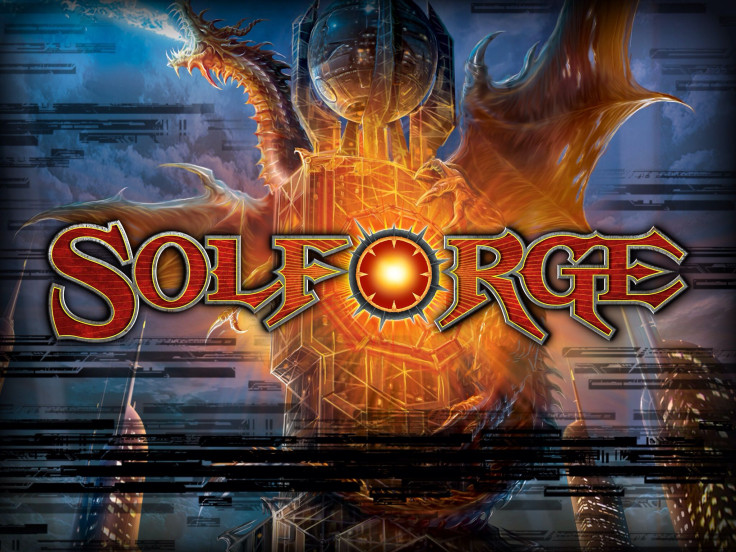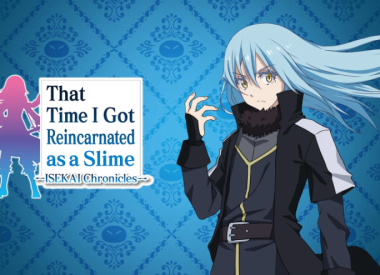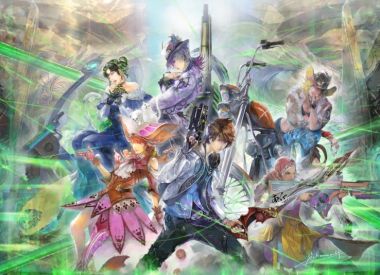From 2002 to 2003 Justin Gary won three national and international Magic: The Gathering championships. Now he designs his own games, like the deckbuilding game Ascension , under the label Stone Blade Entertainment. Gary understands collectible card games from the inside out, as both player and designer, which made him the perfect person to teach SxSW 2016 how to design collectible games.
While his talk dove into core engine mechanics, axes of interaction, resource denial strategies and the ins and outs of game publishing, the most fascinating moment came when Gary took a tricky question head-on: “Are collectible games evil?”
Whether physical or online, collectible card games (CCGs) like Magic: The Gathering, Hearthstone and Gary’s own SolForge have certain core features in common. All CCGs “are not all contained in one purchase,” with content that’s not fixed and an element of scarcity that ensures “some things are rarer and harder to collects than others.”
While the open-ended nature of CCG gaming makes for incredibly dedicated players and communities, the potential for abuse is obvious. Randomized packs can induce a gambler’s mentality, playing on the simple fact that people get a rush discovering an ultra rare card. CCG’s rely on an “aspirational ladder,” that depend upon the natural human instinct for completion.
Simpler games can take the lessons of CCGs and weaponize them for addictive personalities, producing monstrous revenues from games that are downloaded for free (the freemium model South Park went after in its 18th Season). Kim Kardashian: Hollywood is one obvious example, though the mechanics can be seen across the mobile gaming world.
No matter how well-intentioned the designers or dedicated the fanbase, the uncomfortable truth is that, according to Gary, “CCGs have the highest average revenue per user (ARPU) of any games in history.” Diehard fans can spend thousands of dollars. So when Gary got to how to make money off your collectible card game, he prefaced it by calling that portion of the talk the “semi-dark side.”
“I think that the tools that are here can be powerful and they can be used for good or evil,” Gary said. “You can mitigate that feeling of evil by providing great value.”
A card gamer himself, Gary has calculated that he’s extracted more value from CCGs than they have from him. “I love this game category. I’ve grown up in this game category.”
Gary also hopes that people’s investment of time will prove the worthwhileness of the monetary investment. People spend “hundreds of hours” with their chosen CCG, Gary said. “Them spending money on it is not the big deal.”
Since CCGs are often complex and strategic, with fictional worlds that can reward diehard fans, Gary feels that the continued monetary investment becomes worthwhile so long as the game designer is servicing the needs of its players.
Still, a question at the end of Gary’s talk delved back into the psychological tricks used to extract money from CCG players. “You always want to give people something that’s an obvious super buy up front,” Gary told an aspiring CCG designer. “So it’s a no brainer for you to just jump and spend that first dollar.”
At that point, many people are on the hook, sunk cost justifying more expenditures. “Once people spend dollar one the likelihood of them spending more goes up 300-fold. It’s just a huge, huge difference,” Gary told the SxSW audience.
It’s easy to see why he framed this particular part of the discussion as “semi-dark.” Many of the tactics would be obvious and familiar to other industries—even grocery stores game their customers to get an edge in sales—but it feels qualitatively different when discussed in the nerd context of fantasy. Games and properties with dedicated fan bases often discover these tensions as they mature. Many designers emerge out of the same tightly-knit nerd communities as their players, making the question of revenue extraction a thorny balance between running a business that provides real value and potentially exploiting the sense of community that brought your customers together in the first place.
After multiple asides spent geeking out about card mechanics minutiae it's obvious that Gary is more focused on his community than on their wallets, but can we trust all game designers to be as true blue? Ultimately, what draws people to CCGs are less intrinsic evils of the medium and more facts of human psychology. The same thrills that draw us to a game can be turned against us. It’s when the psychological tricks move beyond the fun provided the player and into the realm of exploiting addiction that freemium games move from the light side to the dark.


















